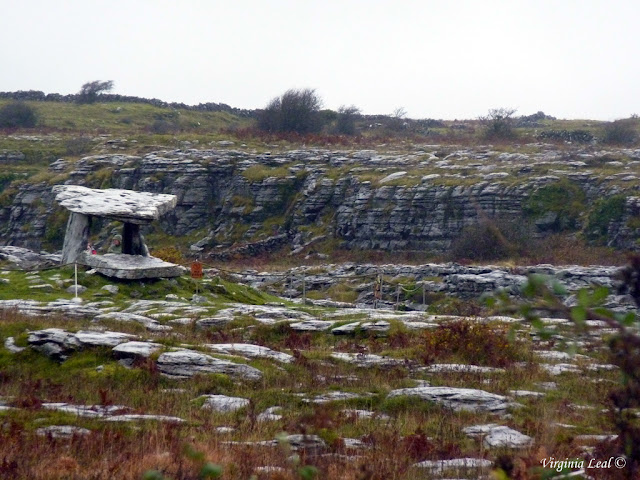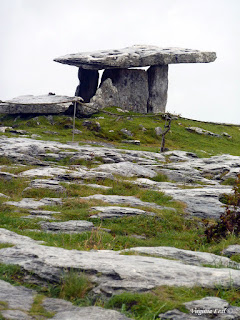The word Burren derives from boireann, wich means “rocky land” in
Gaelic – an apt name for this vast limestone plateau in northwest County
Clare. This strange landscape of contorted rocks and hillocks was formed some
350 millions years ago. Its limestone pavements are riven by cracks called “grikes”
that form isolated “clint” rocks.
In the 1640’s, Cromwell’s surveyor described it as “a savage land, yielding neither water
enough to drown a man, nor tree to hang him, nor soil enough to bury”. Few
trees manage to grow in this desolate place, yet other plants thrive.
The
Burren
is a unique botanical environment in wich Mediterranean and alpine plants rare
to Ireland grow side by side. From May to August, an astonishing array of
flowers adds splashes of colour to the austere landscape. These plants grow
most abundantly around the region’s shallow lakes and pastures, but they also
take root in the crevices of the limestone pavements which are the most
striking geological feature of the rocky plateau. In the southern part of the Burren, limestone gives way to the
black shale and sandstone that form the dramatic Cliffs of Moher.
In the heart of the Burren’s limestone plateu, there
is the Poulnabrone Dolmen. This is a
Neolithic portal tomb and is estimated as being 4500 years old. The Poulnabrone Dolmen is just one of
more than 70 megalithic tombs in the Burren. It seems to have been an important
ceremonial site where people of some standing were interred; radiocarbon dating
suggests that these burial occurred between about 3800 and 3200 BC.
During an archaeological excavation at Poulnabrone the remains of more than 20 adults and children were found, together with a polished stone axe, some bone and flint items and broken pieces of pottery.
Photos
Virginia Leal ©
Sources
GERARD-SHARP, Lisa and PERRY, Tim. “Eyewitness
Travel: Ireland”. By DK Eyewitness Travel Guide. Page: 190 - 191.
DAVIES, Gill. “Ireland: capturing the spirit of a
land of legend and mystery”. By Parragon. Page: 50, 90.


